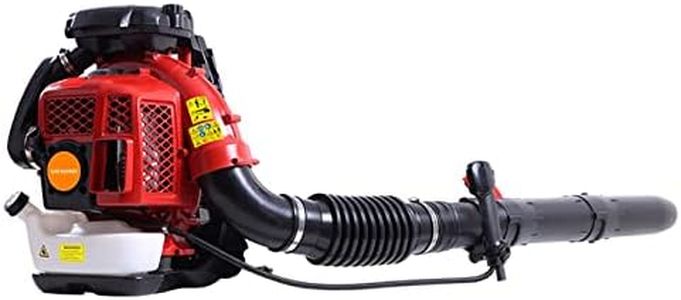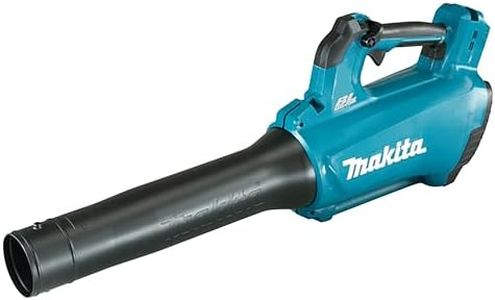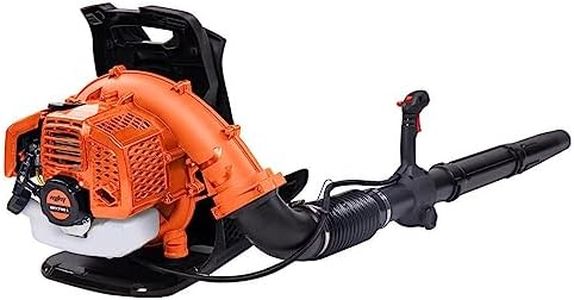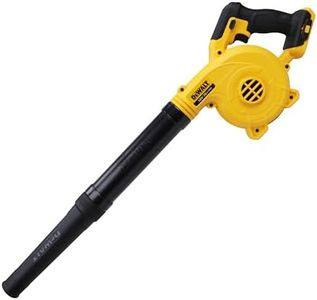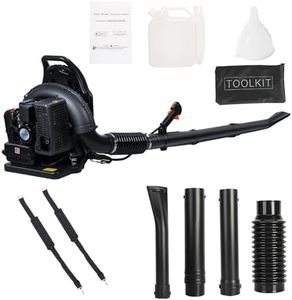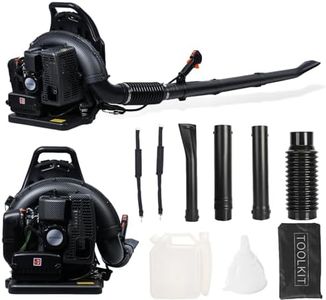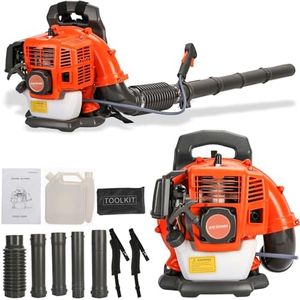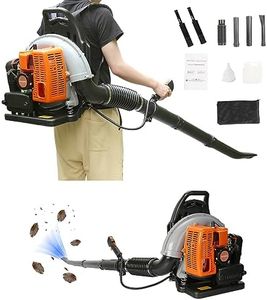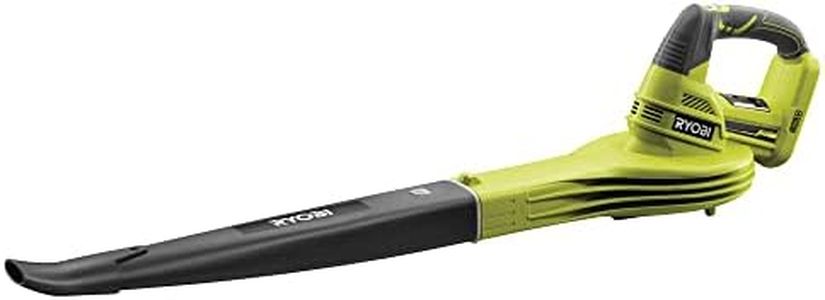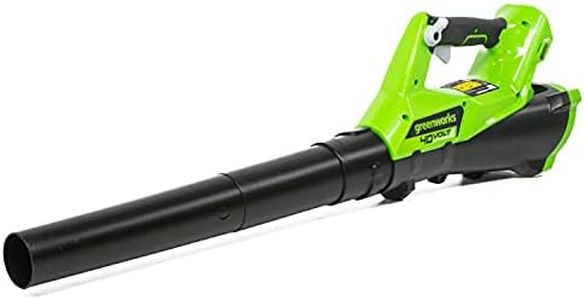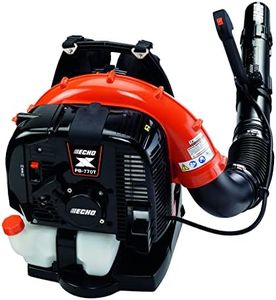We Use CookiesWe use cookies to enhance the security, performance,
functionality and for analytical and promotional activities. By continuing to browse this site you
are agreeing to our privacy policy
10 Best Backpack Leaf Blowers
From leading brands and best sellers available on the web.Buying Guide for the Best Backpack Leaf Blowers
Choosing the right backpack leaf blower can make yard cleanup faster, easier, and much less tiring for you. The backpack design lets you carry the weight comfortably on your back, so you can use more powerful blowers for longer periods compared to handheld models. When shopping, it's important to think about the size of the area you need to clear, the type of debris you'll be tackling, and your comfort during use. Understanding the key specifications will help you pick a blower that suits your needs and won't be too hard to manage.Air Volume (CFM)CFM stands for Cubic Feet per Minute and it measures how much air flows out of the blower's nozzle. This is a critical spec because it tells you how much debris you can move at once. Lower CFM models are suitable for light jobs like dry leaves on hard surfaces, while medium CFM is good for moderate yards with mixed debris. High CFM models move a lot of air, making them ideal for big areas or tough, wet leaves. Think about the size and type of clean-up you often do—bigger yards with more debris benefit from higher CFM values.
Air Speed (MPH)MPH means miles per hour, and this spec tells you how fast the air exits the nozzle. High MPH helps blast away stubborn materials or debris stuck in the grass or between cracks. Low MPH works well for gentle tasks or working around delicate landscaping. For most tasks, a balance between air speed and volume works best. If you need to remove heavy or wet debris, consider a blower with a higher MPH; otherwise, a middle range is fine for general yard care.
Engine Type (Gas vs. Battery/Electric)Backpack leaf blowers come either as gas-powered or battery/electric models. Gas engines are powerful, suitable for big areas, and can run for longer, but they are heavier, noisier, and need fuel. Battery/electric models are quieter, cleaner, usually lighter, and easier to start, but they may have limited run time per charge. Choose gas if you have a large property or need long sessions; go for electric if you prefer quiet, low-maintenance tools and have a smaller area to clean.
Weight and ComfortThe weight of the blower and the quality of the straps and back support matter because you'll be wearing it on your back for a while. Heavier blowers can tire you out, especially if they lack padding or adjustable straps. Lightweight models are easier to handle for most people, but may offer less power. Try to find a balance between comfort and the power you need, and look for features like padded straps or adjustable harnesses if you'll be using it often.
Noise LevelBackpack leaf blowers can be very loud, measured in decibels (dB). High noise levels could disturb neighbors or require you to use ear protection. Some models are designed to be quieter, which can be a big advantage in neighborhoods or for early morning work. If noise is a concern for you, look for lower decibel ratings or special quiet design features.
Run Time or Fuel Tank SizeFor gas blowers, the size of the fuel tank decides how long you can work without refueling. For battery models, the run time per charge does the same. If you have a large yard or many tasks, a bigger tank or longer-lasting battery means fewer breaks. Consider how long your cleaning sessions typically last and match this spec to your needs.
Vibration ReductionSome backpack blowers have special systems to reduce the amount of vibration you feel while using them. Less vibration means less fatigue and more comfort, especially during long sessions. If you plan to use your blower a lot or for extended time frames, look for features that help reduce vibration for better comfort.
